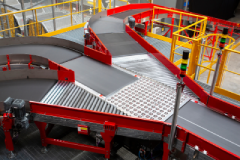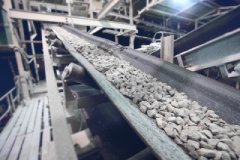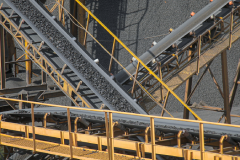Proper Conveyor Belt Storage
Proper storage of conveyor belts is crucial to maintaining their longevity and performance. When not in use, conveyor belts should be stored in a manner that prevents damage, deformation, and degradation. Rolling a conveyor belt correctly is an essential step in this process, ensuring that the belt remains in optimal condition for future use. At Davis Industrial, we strive to ensure all of our conveyor belts are in pristine condition to reduce potential downtime.
Why Proper Conveyor Belt Storage Matters
Conveyor belts are the backbone to the operations of various industries, from manufacturing to mining to food and pharmaceuticals. They are designed to transport materials efficiently and withstand harsh conditions. However, improper storage can lead to significant damage, including cracks, warping, and contamination. This not only shortens the belt's lifespan but also increases the risk of operational failures when the belt is eventually installed. Proper storage helps avoid these issues, saving time and money in the long run.
Properly Storing A Conveyor Belt
After the conveyor belt is rolled and secured, it’s time to store it. Proper storage conditions are essential to preserving the belt's condition and ensuring it remains ready for use. Consider the following guidelines for storing your rolled conveyor belt:
Store in a Cool, Dry Environment

The storage environment plays a significant role in the longevity of a conveyor belt. The ideal storage location is cool, dry, and well-ventilated. Avoid storing the belt in areas with high humidity, direct sunlight, or extreme temperatures, as these conditions can lead to the degradation of the belt material. Temperature fluctuations can cause the belt to expand and contract, leading to cracks or warping over time.
Avoid Direct Sunlight and UV Exposure

Prolonged exposure to direct sunlight and UV rays can cause the conveyor belt material to degrade, leading to brittleness and cracking. If possible, store the conveyor belt in a covered or shaded area where it is protected from sunlight. If indoor storage is not available, consider using a UV-resistant cover to shield the belt from harmful rays.
Elevate the Belt Off the Ground
To prevent moisture absorption and contamination, store the conveyor belt off the ground. Use pallets, racks, belt stands, or other supports to elevate the belt and keep it dry. This also helps to prevent damage from pests or rodents, which can be a concern in some storage environments.
Regularly Inspect the Stored Belt

Even while in storage, the conveyor belt should be inspected regularly. Check for signs of moisture, mold, or other potential issues that could affect the belt's integrity. If any problems are detected, address them immediately to prevent further damage. Our team at Davis Industrial can perform conveyor belt inspections for you to ensure your belts are ready to move material as quickly and efficiently as possible.
Storing a conveyor belt may seem like a simple task, but following the correct procedures is essential for maintaining the belt's longevity and performance. By inspecting, cleaning, and properly rolling the belt, and by storing it in optimal conditions, you can ensure that your conveyor belt remains in excellent condition, ready for use when needed. Proper storage practices not only extend the life of the belt but also contribute to the overall efficiency and reliability of your conveyor system.







